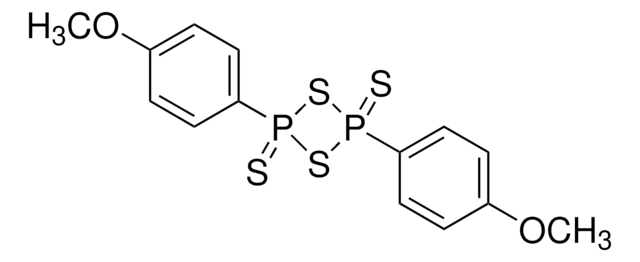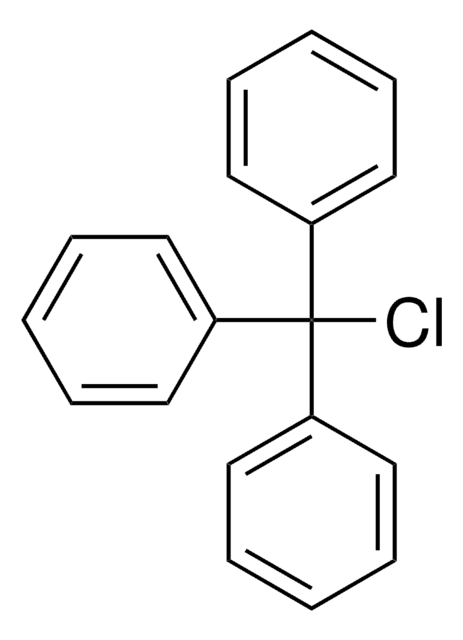277908
Ammonium molybdate
99.98% trace metals basis
Synonym(s):
Ammonium orthomolybdate, Diammonium molybdate
Sign Into View Organizational & Contract Pricing
All Photos(4)
About This Item
Linear Formula:
(NH4)2MoO4
CAS Number:
Molecular Weight:
196.01
EC Number:
MDL number:
UNSPSC Code:
12352302
PubChem Substance ID:
NACRES:
NA.23
form:
solid
solubility:
ethanol: insoluble(lit.)
Recommended Products
Quality Level
Assay
99.98% trace metals basis
form
solid
reaction suitability
reagent type: catalyst
technique(s)
electron microscopy: suitable
impurities
≤250.0 ppm Trace Metal Analysis
solubility
ethanol: insoluble(lit.)
SMILES string
N.N.O[Mo](O)(=O)=O
InChI
1S/Mo.2H3N.2H2O.2O/h;2*1H3;2*1H2;;/q+2;;;;;;/p-2
InChI key
LZRXBDCICLHKEN-UHFFFAOYSA-L
Looking for similar products? Visit Product Comparison Guide
General description
Ammonium molybdate can be prepared by dissolving molybdenum trioxide in ammonia.
Application
Ammonium molybdate has been used to prepare phosphomolybdates. (NH4)2MoO4 was used as an analytical reagent for quantitative analysis of phosphates, silicates, arsenates and lead in their aqueous solutions.2 At saturated concentration, (NH4)2MoO4 was used to perform cryo-negative staining and as a negative stain in biological electron microscopy. Ammonium molybdate was used in study of crystallisation of cell-free-expressed membrane proteins.
Ammonium molybdate has been used to prepare phosphomolybdates. (NH4)2MoO4 was used as an analytical reagent for quantitative analysis of phosphates, silicates, arsenates and lead in their aqueous solutions. At saturated concentration, (NH4)2MoO4 was used to perform cryo-negative staining and as a negative stain in biological electron microscopy. Ammonium molybdate was used in study of crystallisation of cell-free-expressed membrane proteins.
Signal Word
Warning
Hazard Statements
Precautionary Statements
Hazard Classifications
Acute Tox. 4 Oral
Storage Class Code
13 - Non Combustible Solids
WGK
WGK 1
Flash Point(F)
Not applicable
Flash Point(C)
Not applicable
Personal Protective Equipment
dust mask type N95 (US), Eyeshields, Gloves
Choose from one of the most recent versions:
Already Own This Product?
Find documentation for the products that you have recently purchased in the Document Library.
Customers Also Viewed
Negative staining
Harris JR et al.
Electron Microscopy in Biology (1991)
Handbook of Non-Ferrous Metal Powders: Technologies and Applications null
S De Carlo et al.
Journal of structural biology, 138(3), 216-226 (2002-09-10)
Beam damage is the main resolution-limiting factor when biological particles are observed by cryoelectron microscopy in a thin vitrified solution film. Furthermore, the low contrast of the specimen frequently makes observation difficult and limits the possibility of image processing. Cryo-negative
Effect of the addition of ammonium molybdate on metakaolin-based geopolymer formation: Shrinkage and crystallization
Vidal L, et al.
Powder Technology, 275, 211-219 (2015)
M Adrian et al.
Micron (Oxford, England : 1993), 29(2-3), 145-160 (1998-07-31)
A procedure is presented for the preparation of thin layers of vitrified biological suspensions in the presence of ammonium molybdate, which we term cryo-negative staining. The direct blotting of sample plus stain solution on holey carbon supports produces thin aqueous
Our team of scientists has experience in all areas of research including Life Science, Material Science, Chemical Synthesis, Chromatography, Analytical and many others.
Contact Technical Service




![1,8-Diazabicyclo[5.4.0]undec-7-ene 98%](/deepweb/assets/sigmaaldrich/product/structures/120/564/5b373e23-1624-489c-8efb-692de0f96ffb/640/5b373e23-1624-489c-8efb-692de0f96ffb.png)


